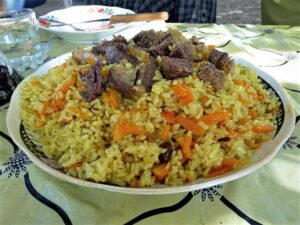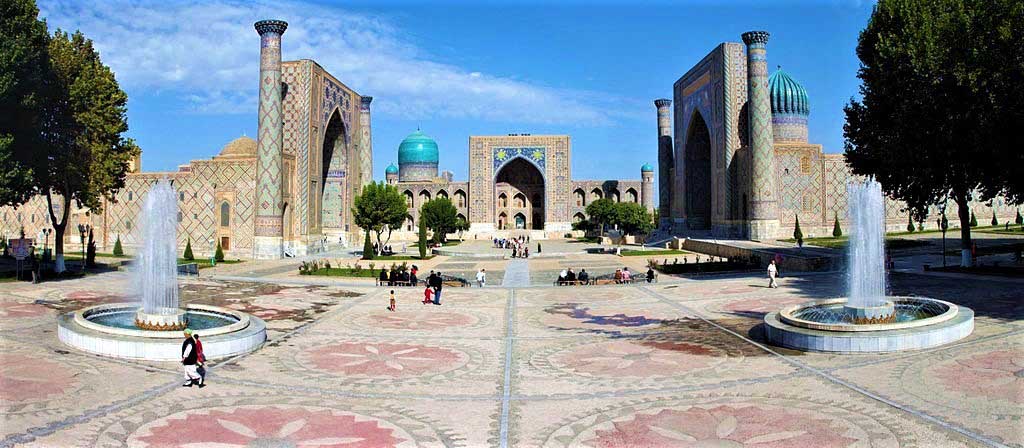Welcome to Uzbekistan, one of only two doubly landlocked countries in the world. Like Lichtenstein in Europe, Uzbekistan is a landlocked country surrounded by landlocked countries.
None of the country’s rivers lead to the ocean, and the Aral Sea – once the Earth’s fourth largest inland sea – has shrunk to less than half its former size volume over the past few decades.

Soups are also pretty hearty in Uzbekistan: lagman is loaded with meat, spices, potatoes, pasta and vegetables, and can contain up to 50 ingredients; mastava is packed with rice, carrots, tomatoes, onions, peas and wild plums; and shurpa is made from fatty meat (usually mutton; as a predominantly Sunni Muslim country, pork is generally off the menu) and fresh vegetables.
There’s also manti (large, steamed dumplings stuffed with ground lamb or beef, and laced with fat); dimlama (a robust, one-pot stew of meat, potatoes, onions, carrots, cabbage, peppers and garlic); and shashlik, kebabs of beef, lamb, chicken or possibly horse meat. In fact, it’s all pretty filling fare here in Uzbekistan – but that’s exactly what you’d expect from a cold, landlocked nation… In winter, much of the country is subjected to temperatures as low as −30C, and it’s all systems go for some hearty plov!







Click here to change your cookie preferences